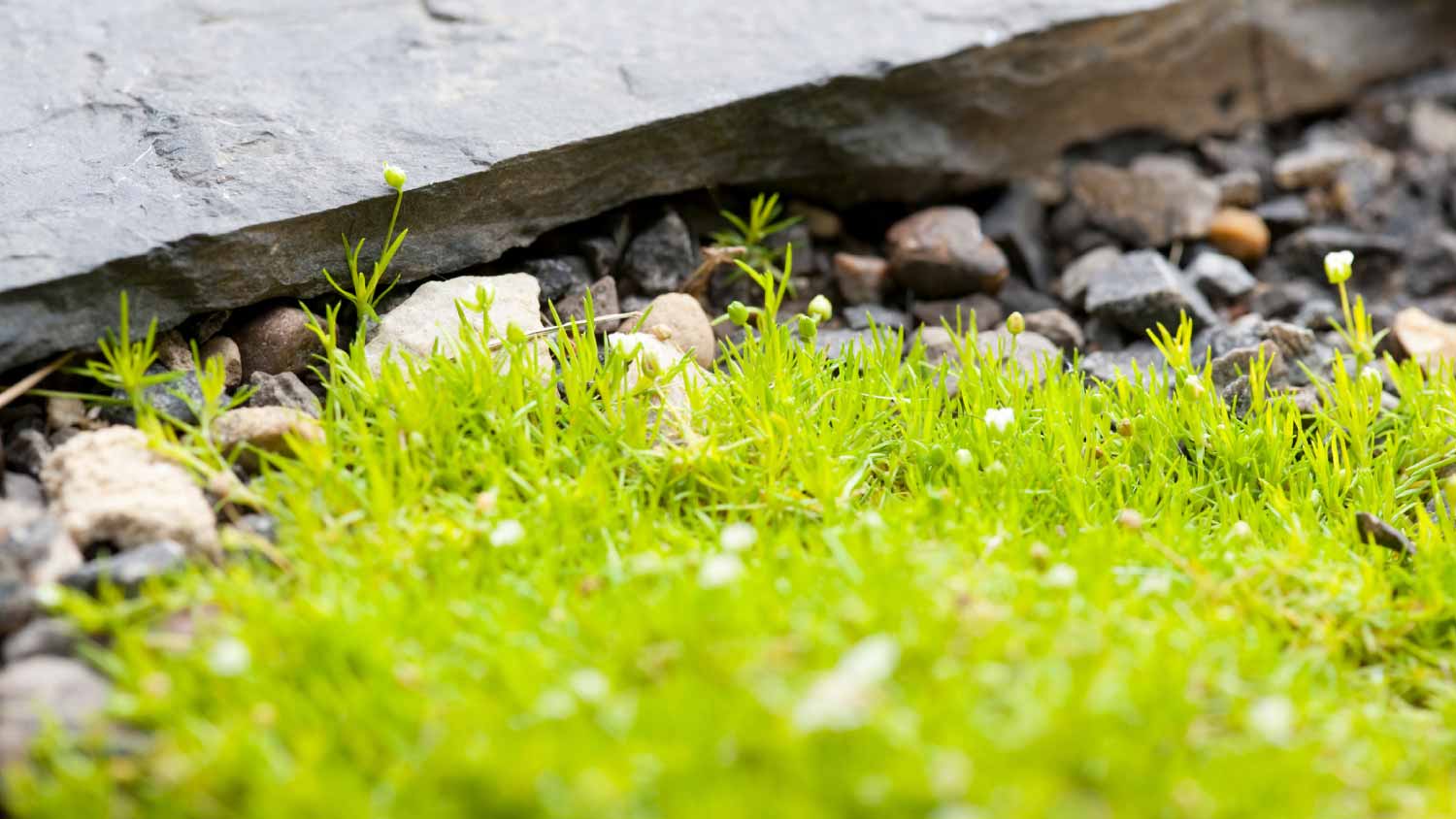10 Poisonous Plants and Weeds
A colorful, beautiful outdoor space is welcoming and relaxing, but make sure yours is free of these harmful poisonous plants


Many of us choose plants for their beauty without ever considering whether they're safe. It turns out that some of the prettiest flowers are also some of the most dangerous. Use this list of harmful plants to make sure your garden is beautiful and safe.
1. Daffodil
Daffodils add undeniable cheer and beauty to the early spring garden with their bright yellow trumpets. And yes, they are a great choice to plant for pollinators as they flower well before many other plants, but they can prove dangerous if you have pets or children. All parts of the daffodil contain lycorine, which is toxic to many mammals, including dogs, cats, horses, and humans. The bulbs also contain high concentrations of oxalates, which are even more dangerous than lycorine. If ingested, daffodils can cause severe vomiting and diarrhea, confusion, loss of balance, stomach pain, and convulsions.
2. Foxglove
Foxglove adds height and texture to flowerbeds and is commonly found in native plantings. Its distinctive pink-purple bell-like flowers look charmingly innocent, but foxglove is actually one of the most poisonous plants if ingested or handled inappropriately. It’s packed with potent substances that, in small quantities, can have therapeutic properties. In fact, the cardiac glycosides contained in foxgloves are extracted and made into a heart medicine called digoxin. However, ingestion of any part of the plant or even handling the leaves with your bare hands can cause nausea, headaches, skin irritation, hallucinations, and significant heart and kidney problems. And if your dog, cat, or horse ingests this plant, they can suffer severe poisoning symptoms, including death. Yes, bees love foxgloves, but these pretty flowers are one of the top ten poisonous plants you should avoid if you have pets, and unless you have plenty of experience at handling these dangerous beauties.
3. Oleander
Oleander is an attractive shrub popular because of its low maintenance and ability to grow in poor soil and challenging conditions. But, they're lethal if ingested by humans or pets. All parts of the plant are poisonous to us and our furry friends—consuming only a single leaf can be enough to kill someone without swift medical treatment.
4. Hemlock
Poison hemlock is undoubtedly one of the most dangerous plants—it can quickly kill you or your pets if you ingest just a small amount.
One of the most deadly aspects of this toxic weed is that it's easily misidentified. It looks very similar to other safe, edible, and medicinal plants including anise, fennel, angelica, yarrow, and wild carrot.
It's important to note that you should also never handle any plant you think may be hemlock with bare hands, as the toxic alkaloids often cause nasty skin irritation. If you think you've got hemlock in your garden, remove it. It's an invasive, toxic weed.
There is no cure for hemlock poisoning, so you really cannot be too careful with this one. If in doubt, call a local garden specialist who can identify the plant and, if necessary, remove it.
5. Pennyroyal
Pennyroyal (Mentha pulegium) is a member of the mint family with pale lilac flowers. It does have numerous benefits—it's a mosquito-repellant plant, and it repels fleas and ticks. Additionally, it has some culinary and medicinal qualities.
However, the oil is deadly to humans and can cause organ failure, seizures, cardiopulmonary collapse, and even death. All parts of the plant are also toxic to dogs, cats, horses, and chickens.
Pennyroyal is undoubtedly pretty and excellent at deterring insect pests, but it’s not worth the risk if you have children or pets. Plus, as a mint species, it spreads like wildfire and can quickly take over your garden.

6. Lily of the Valley
Like foxglove, lily of the valley is graded Class 1 on the poison scale, meaning it can kill. The delicate white flowers look sweetly innocent and bely the fact that lily of the valley is one of the most dangerous plants. Ingesting just a tiny amount of any part of this plant can kill you, your kids, or your pets. Like foxglove, lily of the valley contains super-high concentrations of cardiac glycosides, which is how it kills if ingested. It's also a severe irritant to the skin, so you should never handle it without gloves.
7. Monkshood
Monkshood, also known as wolfsbane, features deep blue-purple hooded flowers, but it's lethal to humans and pets. Even handling this plant without gloves can cause severe symptoms and potentially kill you. Monkshood contains a variety of toxic substances, including neurotoxins and cardiopulmonary toxins. The most deadly is aconitine, which causes cardiopulmonary collapse and is a potent nerve agent. All parts of this plant, including the sap, are potentially lethal if eaten, and it only takes a tiny amount to kill.
8. Poison Ivy
Poison ivy is an all-too-common native plant that causes itchy, painful skin irritation. If you’ve heard the old saying, "leaves of three, let it be," it applies to poison ivy because each leaf consists of three leaflets which appear to be individual leaves growing in a cluster of three. There are several poison ivy species, some growing as a low shrub and others as a climbing vine.
Poison ivy, like poison oak and sumac, contains urushiol oil, which acts as a (sometimes extreme) skin irritant that can cause anything from mildly itchy contact dermatitis to large, extremely painful blisters and, in rare cases, anaphylaxis.
9. Poison Oak
Poison oak is a leafy shrub that can reach heights of 6 feet and has leaves most commonly in threes, although some plants produce foliage with clusters of up to nine leaflets. This is another plant that contains urushiol oil and causes the same type of itchy, painful topical irritation as poison ivy.
If exposed, you’ll notice redness and itching within 48 hours of exposure. Next comes bumps that eventually morph into large blisters. They’ll slowly heal and chances are you’ll be back to normal in 2 to 4 weeks.
Note that while poison oak and poison ivy are both dangerous plants that you want to get rid of, handle them with extreme caution and never burn them. Burning these plants spreads the oils in the smoke from the fire, and this can cause serious respiratory conditions that need immediate medical treatment.
10. Stinging Nettles
Stinging nettles are one of the most common poisonous plants in the world. And while only really a minor irritant with many traditional herbal benefits, these hairy little plants hurt. Delicate dog paws and the sensitive skin of rambunctious kiddos are the most at risk from pain from stinging nettles. The hairs on the leaves and stems of the plant are hollow and when they touch your skin, chemicals flow down the hollow "hairs" into your skin, causing stinging and itching.
Most people experience a temporary stinging and itching sensation and may have a red, bumpy rash. In very rare cases, highly allergic people can go into anaphylactic shock and need immediate medical assistance. Even if you're not dangerously allergic, nettle rash is incredibly unpleasant, but you need to do more than just pull up the leafy parts. Nettles spread vigorously via rhizomes (a system of underground tubers and roots), You need to dig up these rhizomes to get rid of the nettles, as many are tough enough to withstand weed killer.
If you have any doubt about the safety of the weeds or plants on your property, call a garden design pro to identify and remove potentially dangerous plants. They can also help you choose ones that beautify your outdoor space safely and even find pet-friendly plants to keep pests away.





- How To Kill Poison Ivy On A Tree Safely and Effectively
- How to Kill Poison Ivy Naturally
- Go Green: The Best Plants for Every Room in Your Home
- How to Spruce Up Your Existing Garden by Adding New Plants
- What Are Noxious Weeds? Definition, Examples, and Prevention Tips
- Pros and Cons of Vines on Your House: How to Grow Vines on Your Home Safely
- Plant Like a Pro: 9 Gardening Influencers Share Their Secrets to Growing Thriving Plants
- Take Up Home Gardening This Year With Our Ultimate Introduction Guide
- 12 Easy Houseplants You Can Get On a Budget
- 47 Landscaping Ideas to Consider for Your Home















